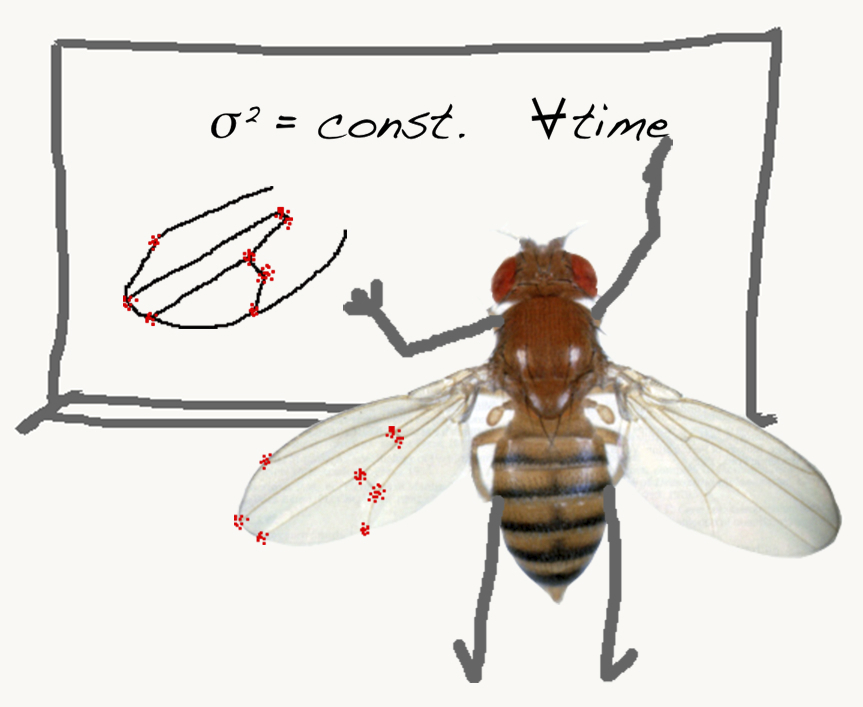Fly wing vein patterns have spatial reproducibility of a single cell
Laurent Abouchar, Mariela D. Petkova, Cynthia R. Steinhardt, and Thomas Gregor. J. Roy. Soc. Interface 11 (97): 20140443 (2014).
Abstract
Developmental processes in multicellular organ- isms occur in fluctuating environments and are prone to noise, yet they produce complex patterns with astonishing reproducibility. We measure the left-right and inter-individual precision of bilater- ally symmetric fly wings across the natural range of genetic and environmental conditions and find that wing vein patterns are specified with identical spatial precision and are reproducible to within a single cell width. The early fly embryo operates at a similar degree of reproducibility, suggesting that the overall spatial precision of morphogenesis in Drosophila performs at the single cell level. Could development be operating at the physical limit of what a biological system can achieve?
PDF. [For original, pre-peer review version see: arXiv.org:1309.6273 [q-bio.TO]]
Supplementary Material.
 Media Abstract
Media Abstract
We ask the question whether the left and the right wing of a given fly are more similar to each other than the wings of two different individuals. We show that under certain conditions the answer is no, which means that wings can be as reproducible from one individual to the next as they are left-right symmetric within one animal. We further show that the precision with which wings are reproducible is better than the size of a single wing cell. Our results suggest that the processes that generate fly wings operate with the highest fidelity, and with a precision that is as good as it possibly could be.